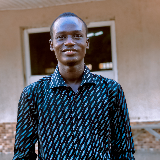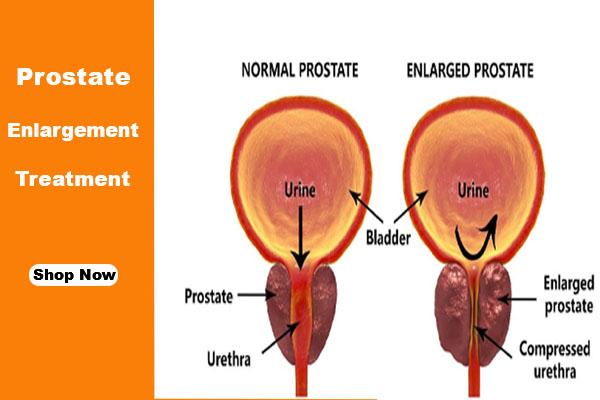Table of contents [Show]
What is Lymphogranuloma Venereum (LGV)
Lymphogranuloma Venereum, often called LGV, is a sexually transmitted infection (STI) caused by a type of Chlamydia trachomatis bacteria. It is not the same as the regular chlamydia infection that causes mild genital discharge.
LGV attacks the lymphatic system, leading to swelling, pain, and sores in the genital area. The disease starts with a small sore that may go unnoticed, but after a few days or weeks, painful swelling may appear in the groin or rectal area. This infection is more common in sexually active adults, especially among people who have unprotected sex or multiple partners. LGV can affect both men and women, but symptoms may differ depending on the site of infection.
Symptoms of Lymphogranuloma Venereum (LGV) |
The symptoms of LGV infection depend on the stage of the disease. It develops in three main stages. In the first stage, a small sore or ulcer may appear on the genitals, cervix, or rectum. This sore is usually painless and heals quickly, which is why many people do not notice it. In the second stage, bacteria move to the lymph nodes, causing painful lumps in the groin or swelling around the anus.
People with rectal LGV infection may experience rectal pain, discharge, and bleeding, especially in those who have anal intercourse. In some cases, fever, fatigue, and joint pain can occur. The third stage, also known as chronic LGV, can cause long-term damage such as genital ulcers, rectal strictures, or elephantiasis of the genitals if untreated.
Causes of Lymphogranuloma Venereum (LGV) |
Lymphogranuloma Venereum is caused by specific strains of the bacterium Chlamydia trachomatis known as L1, L2, and L3. These strains are more aggressive than those that cause common chlamydia infections. The bacteria enter the body through small breaks in the skin during sexual contact. Causes of LGV include:
- Unprotected sexual intercourse: Engaging in vaginal, anal, or oral sex without a condom increases the risk of transmission.
- Multiple sexual partners: Having many partners raises exposure to different bacterial strains.
- Infection through rectal contact: The bacteria can infect the rectal lining, especially in men who have sex with men.
- Weakened immune system: People with low immunity, such as those with HIV, are more prone to LGV infection.
- Untreated chlamydia infection: A regular chlamydia infection that remains untreated can progress to LGV.
Transmission of Lymphogranuloma Venereum (LGV) |
LGV is mainly transmitted through sexual contact. The infection spreads when the bacteria from an infected person’s genital fluids or rectal secretions enter the body of another person through small skin tears during sex. Vaginal, anal, and oral sex can all spread the bacteria if protection is not used.
In some rare cases, LGV can spread through contaminated sex toys if not cleaned properly. It is important to note that LGV is not spread by casual contact such as hugging, sharing toilets, or using the same utensils. People at higher risk include those who have multiple partners, men who have sex with men, and individuals with existing sexually transmitted infections.
Prevention of Lymphogranuloma Venereum (LGV) |
- Use condoms consistently: Condoms offer effective protection against LGV and other sexually transmitted diseases by limiting bacterial entry.
- Limit sexual partners: Reducing the number of sexual partners lowers exposure to infection.
- Get regular STI screening: Early detection through testing helps prevent spread and complications.
- Avoid sharing sex toys: If used, they should be washed and disinfected properly between uses.
- Strengthen your immune system: Eating balanced meals, exercising, and taking natural immune boosters like Forever ImmuBlend and Aloe Vera Gel can help the body fight infections naturally.
Lymphogranuloma Venereum (LGV) Treatment Medications and Supplements |
Champion Special Powder combines four powerful healing herbs Spathoda campanulata, Fagara zanthozyloides, Anthocleista nobilis, and Alstonia boonei each known for fighting infections and strengthening the immune system. In LGV, where bacteria from Chlamydia trachomatis invade the lymphatic system and cause swelling and sores, these herbs work together to stop the infection and repair tissue. Spathoda campanulata contains alkaloids and flavonoids that reduce swelling of lymph nodes and destroy bacteria hiding in the tissues. Fagara zanthozyloides improves blood flow and helps the liver remove toxins released during infection.
Anthocleista nobilis acts as a natural antibiotic, helping the body destroy harmful bacteria in the genital and lymph regions. Alstonia boonei strengthens immune cells and helps tissues heal by improving white blood cell function.
Together, they help clear the infection, calm pain and inflammation, and restore strength to the immune system during LGV recovery.
Forever Aloe Vera Gel is made from 99.7% pure aloe vera leaf, a plant known for its healing and cleansing power. For people with LGV, it helps the body in several ways. The main compound in aloe, acemannan, supports immune cells that fight bacteria and viruses. It also helps the skin and internal tissues repair faster after damage. Aloin and emodin, two other active components, have antibacterial and antiviral properties that help control infection in the lymph nodes and reproductive organs.
Aloe also reduces swelling and helps cleanse the intestines and urinary tract, which supports detoxification. By drinking Aloe Vera Gel daily, the body becomes more hydrated, inflammation lessens, and the immune system gets stronger all important for recovering from LGV and preventing future infections.
Surety is a natural herbal remedy made from Anthocleista nobilis, Cissus quadrangularis, and Terminalia superba. Each herb plays an important role in fighting LGV and repairing damaged tissues. Anthocleista nobilis has strong antibacterial and detoxifying compounds called alkaloids and saponins that kill the bacteria responsible for LGV and cleanse the lymphatic system.
Cissus quadrangularis, known as the “Bone Setter,” contains resveratrol and vitamin C, which reduce inflammation, heal internal sores, and strengthen the walls of lymph vessels. Terminalia superba contains natural acids like gallic acid and ellagic acid that destroy harmful microbes and purify the blood. Together, these herbs cleanse the body of infection, calm inflammation, support the immune system, and help the genital and lymph tissues recover their normal function after LGV.
Forever ImmuBlend is a supplement made to support your body’s natural defense system. It contains vitamins C and D, zinc, lactoferrin, and extracts from maitake and shiitake mushrooms. These ingredients help the body fight LGV by increasing white blood cell activity and strengthening the immune system. Vitamin C protects cells from damage and helps produce collagen to repair infected tissue. Vitamin D boosts the immune response, helping the body target bacteria in the lymph nodes. Zinc speeds up wound healing and helps new cells grow in the damaged areas. Lactoferrin binds to iron, preventing bacteria from multiplying, while maitake and shiitake mushrooms improve immune coordination by activating macrophages that destroy infected cells. Together, these nutrients make the immune system stronger, reduce infection spread, and help the body heal faster from LGV.
Forever Bee Propolis is a natural substance collected by bees from tree buds. It is rich in flavonoids, phenolic acids, and vitamins A, B, C, D, and E. In LGV, when tissues become swollen, painful, or ulcerated, bee propolis helps protect against further bacterial attack. The flavonoids fight infection and inflammation, helping reduce swelling in lymph nodes. The phenolic compounds stop bacteria from multiplying and support tissue repair. Vitamins like B5 (pantothenic acid) assist in forming red blood cells and hormones that aid recovery. Propolis also helps wounds heal faster and creates a protective layer on the skin or mucous membranes, preventing reinfection. Using Forever Bee Propolis during LGV treatment helps strengthen the immune system, reduce inflammation, and speed up the body’s natural healing process.
Forever Aloe Lips is a soothing and healing balm made from aloe vera, jojoba oil, and beeswax, made to protect and repair irritated skin. It is especially helpful for people with Lymphogranuloma Venereum (LGV), where painful genital ulcers, swollen lymph nodes, and inflammation around the rectal area (proctocolitis) can cause great discomfort. Aloe vera in the balm contains acemannan and aloin, natural healing compounds that calm irritation, fight bacteria, and speed up skin repair. These properties make it suitable for soothing genital sores and tender skin around inflamed lymph nodes. Jojoba oil mimics the skin’s natural oils, providing deep moisture that helps cracked or ulcerated areas heal smoothly. Beeswax forms a thin, gentle barrier over the affected skin, protecting it from infection and reducing friction or dryness.
To use it effectively, apply a small amount of Forever Aloe Lips with clean cotton on the genital ulcers, swollen lymph nodes, and areas affected by proctocolitis. This gentle method helps deliver the soothing and antibacterial effects directly to the inflamed tissues, promoting healing and comfort. With regular application, Aloe Lips keeps the skin soft, prevents irritation, and supports faster recovery from LGV-related wounds and inflammation.

 Kefas Solomon
Kefas Solomon

Leave a comment
Your email address will not be published. Required fields are marked *